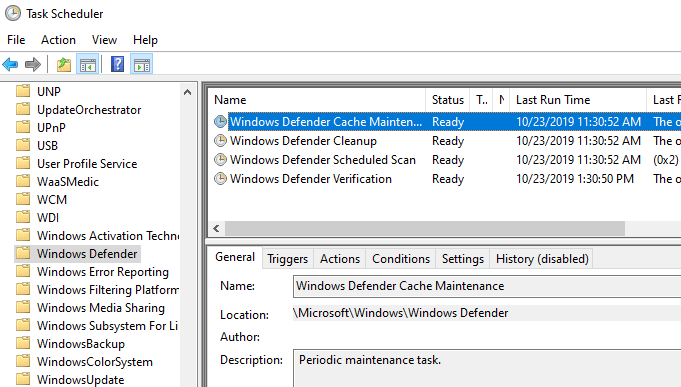Once more, there appears to be an unusually high CPU utilization on your computer. You’ve ended background apps, restarted the computer to free up RAM, and used the system diagnostics to determine the issue.
This could be a nerve-wracking moment for anyone unfamiliar with IT support services. Don’t worry, though; Window Defender might be the surprising culprit. the executable for the antimalware service, specifically.
Find out if this executable is affecting your computer and how to solve it by reading this post.
What does Antimalware Service Executable(MSMPeng.exe) mean?
To keep your computer safe, do you use Windows Defender? If so, use the keyboard shortcuts Ctrl + Shift + Esc or Start Menu > Task Manager to access the Windows Task Manager. Scroll down the list of background processes until you locate the Antimalware Service Executable process and its associated file, msmpeng.exe.
Through this procedure, Windows Defender is able to keep an eye out for any risks to your computer and offer real-time defense against malware and cyberattacks. On the other hand, it may also be the reason for abnormally high CPU utilization.
Full Scan, a function of Windows Defender that does a thorough examination of every file on your computer, is another one that can slow down your system. As a result of Full Scan’s heavy reliance on the CPU and willingness to use all available resources, your system may lag, hang, or encounter other disturbances while it is scanning.
While system resources are typically used by antivirus software during scans, Windows Defender is much more resource-hungry than most. It is well known to run scans as soon as you wake up the computer to write a quick email or browse the internet, and to utilize excessive CPU for extended periods of time.
Windows Defender might be the only thing separating your computer from the bad guys, so even if this can be annoying, you shouldn’t remove or disable it without first installing another IT security solution! Allow the application to do its task, eliminate any risks, and then take the following actions to stop the anti-malware executable problem from occurring in the future:
Fix #1: Change Windows Defender’s scheduling options

- Antimalware Service Executable high memory issues usually occur for most users during a thorough Windows Defender scan. To fix this, we can arrange for the scans to run during a period when your CPU usage will be minimal.
- Launch the application by opening the Start menu, typing “task scheduler,” and selecting the first result.
- Double-click Task Scheduler Library in the left navigation pane. Keep these folders expanded and navigate to the following locations: Windows Defender, Microsoft, Library, and Windows.
- Once the Windows Defender folder has been opened, double-click Windows Defender Scheduled Scan, which is situated in the middle pane.
- After selecting the Conditions tab and unchecking every option, click OK. This will resolve any scheduled scan issues.
- It’s crucial to schedule regular scans to keep your computer safe, but we can accomplish this with less impact on the efficiency of your system. To accomplish this, choose the Triggers tab, double-click Windows Defender Scheduled Scan, and then click New.
- Make a customized schedule for scans that works for you, using options that balance system performance and protection. Generally speaking, we advise doing weekly scans during a time when you won’t likely notice the higher CPU consumption.
- The three services that are still present in the Library/Microsoft/Windows/Windows Defender folder—Windows Defender Cache Maintenance, Windows Defender Cleanup, and Windows Defender Verification—must be performed once more.
Fix #2: Disable Windows Defender
You may be tempted to turn off Windows Defender completely if the issue still doesn’t go away after implementing the first two workarounds. Remember that doing so exposes your machine to various cyberattacks, so before uninstalling Windows Defender, make sure you have a strong anti-malware program installed.

To launch the Run Dialog Box, press Windows Key + R.
- Type regedit into the Run Dialog Box, then click OK to launch the Registry Editor.
- To get to HKEY_LOCAL_MACHINE\SOFTWARE\Policies\, double-click the folders in the left navigation pane. Windows Defender from Microsoft.
- If you locate a DisableAntiSpyware registry entry, double-click it and change its value data to 1.
- 4b. Use the right-click menu in the main Registry Editor pane to choose New > DWORD (32-bit) Value if the DisableAntiSpyware registry item is not visible.
- Name this new registry entry DisableAntiSpyware. Set its value data to 1 by double-clicking on it.
Fix #3: Check for malware infections
Windows Defender’s disruptive effects on your computer’s performance could be the result of something more malicious. To check for any viruses or malware that might be interfering with your computer’s smooth and safe operation, run a comprehensive system scan using a reliable and lightweight anti-malware program like Emsisoft Anti-Malware .
Windows Defender is a useful tool, especially because your operating system comes with it for free, but it may definitely strain the CPU of your machine. You can manage the threat protection provided by Antimalware Service Executable and maintain optimal system performance by following the instructions provided in this article.
Related Articles:
https://landscapeinsight.com/technology/call-failed-iphone/70688/
https://landscapeinsight.com/technology/google-docs-dark-mode/70708/
Jessica is engaged in brand exposure at LandscapeInsight. She brings forth content that helps both the reader and brands based on research and trends. You can reach Jessica at –jessica@landscapeinsight.com or on Our website Contact Us Page.








